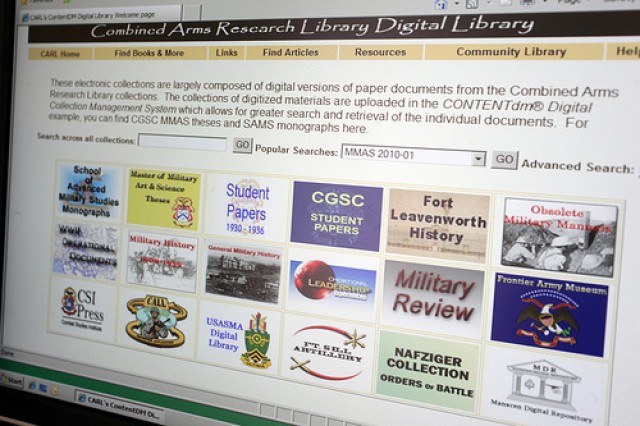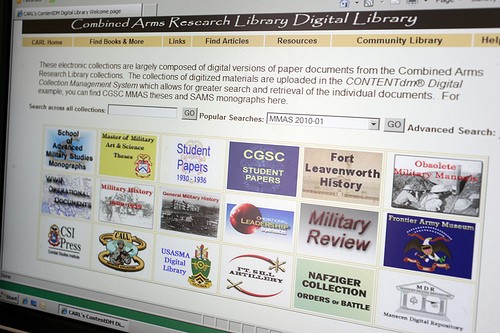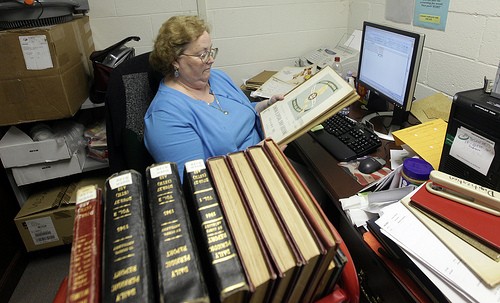FORT SILL, Okla.--During World War I, a U.S. Army officer wrote about his experiences with personal hygiene in the trenches and published them in "Notes for Infantry Officers on Trench Warfare." The War Department document No. 582 hit on such topics as head lice, roaches and vermin. The hygiene lessons learned in battle and published in 1917, can be read online today by everyone.
"Notes for Infantry Officers on Trench Warfare" is one of the books that has been digitized and made available by the Morris Swett Technical Library the Army's artillery school library. Staff members at the library are currently digitizing 1 million pages of historical coast, field and air defense artillery documents as well as historic Fort Sill documents and putting them online.
"If we don't preserve them, we're going to lose them," said Jo Ann Knight, Swett library supervisory librarian. "Some of this paper is getting mighty fragile ... it's old and with the heat and humidity it's crumbling."
Swett's collection of historic artillery documents predates the Revolutionary War and includes after action reports from battles from World Wars I and II, and the Korean and Vietnam wars, Knight said.
"We are trying to digitize what we believe people will use the most," Knight said. "And, the stuff that's inaccessible to people like if we only have one (hard) copy, we're trying to get that information out (online)."
Since late November, document imaging specialist Cheryl Gautier has been gingerly scanning old books, maps, photographs, diagrams and other documents. She uses a Zeutschel 1400 scanner, which she described as a "big copier." Gautier averages about 5,000 scans a day.
After Gautier scanned documents, James Apriesnig, document imaging specialist, checked them for quality and put them in portable document format, or PDF, onto a DVD.
Then Knight and Jorge Rodriguez, Swett library technician, again quality check the DVD with its completed volumes. Finally, it is uploaded onto the Combined Arms Research Library at Fort Leavenworth, Kan., which provides access to all the Training and Doctrine Command digital libraries.
It takes about two weeks for a book to be scanned and uploaded to CARL, Apriesnig said. About 350,000 scans, which includes about 2,000 books, have been scanned so far, said Rodriguez. Books average about 187 pages.
Fort Sill Artillery materials are categorized into one of six subcollections, including equipment, operations, Fort Sill history and Fires Center of Excellence.
Users looking for a particular subject can use the CARL search feature, which uses optical character recognition, or OCR, Rodriguez said.
"With the OCR it will be a lot easier finding something than strolling through stacks," he said. And, online materials can be searched 24/7, printed and book marked.
The Fort Sill archives were put on CARL about mid-March and interest in them has been increasing. "We started at 900 hits, the second month increased to 1,300 and now we're up to 1,900 hits a month," Knight said.
Interestingly, the most accessed book has been about the World War II military intelligence prebattle analysis of Guadalcanal, Knight said.
"Apparently, we are the only people who kept that (book)," she said.
The 1 million scans, which will take about one year, will only digitize about a third of Swett's collection, Knight said. She hopes to eventually have the entire collection available online, which would take two to three years.
"My goal is to get all of this stuff that never sees the light of day, because of its condition, available to anyone who needs it," Knight said.






Social Sharing